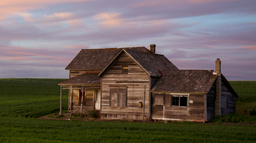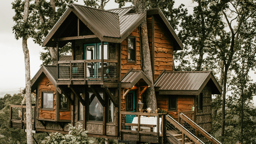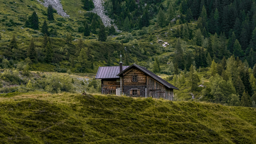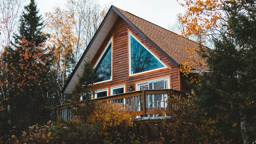
Prior to the Great Depression, many of the timbers used for log cabins were stripped of the soft outer sapwood, so that only the hard, inner bug-resistant heartwood was used for building purposes. Nowadays, fast growing pine and spruce logs are sometimes used, and these logs are softer and more prone to insect infestation than older, harder log cabins. The holes critters bore in your logs are unsightly, can cause structural damage in relatively short periods of time, and will greatly accelerate water-based decay in your home’s logs. Here's what you need to know to keep your cabin safe.
What kind of bugs?
Common bugs that infest log cabins include beetles, borers, carpenter bee larvae and termites. Some pests, like bark beetles and round- and flatheaded borers, are already in the wood when harvested and can emerge up to three years or more after the cabin is built.Do I have bugs?
The most obvious signs of bug infestation are the entry holes in the logs. Infestations often begin in the log ends, where drying cracks open the all essential starting point for bugs to bore in. You can also hear certain bugs chewing through the wood at times; old house borers are notorious for their nighttime munching. And that woodpecker hammering away on the side of the cabin? He’s not trying to make drummer in the local bar band; he hears bugs inside the logs, and wants his lunch.Fill gaps & cracks.
To avoid predation by birds, bugs prefer to start their infestation by infiltrating cracks or other sheltered areas. Look for gaps in your chinking, especially where logs meet window and door frames. Also inspect your logs for cracks (aka checking). Once you’ve located gaps and cracks, seal them as soon as possible. Companies like Continental, Perma-Chink, and Sashco carry caulks and chinking material specifically made for log cabins.Consider dusting & fumigating.
If you have any concerns about safely exterminating pests on your own, hire a pro. But if you decide to go the DIY route: To combat an infestation of carpenter bees, buy a Carpenter Bee Kit, which contains Drione Dust and an applicator.
To get rid of infestations of wood-boring beetles and termites, fumigate with a borate-based pesticide with preservative, which interrupts the digestive process in many wood-eating insects. For logs to accept the borate-based spray, they must be dry. So first check moisture levels to a depth of at least 2 inches with a moisture meter. Borate-based treatments also won’t penetrate water-repellent finishes, so you may need to strip the logs first. If you’re unsure about permeability, spray a few logs first to gauge how they accept water. Applied to wet or sealed wood, borate-based treatments will leave hard-to-remove white crystals on the wood’s surface. Keep in mind, it may take weeks for the borates to work.










